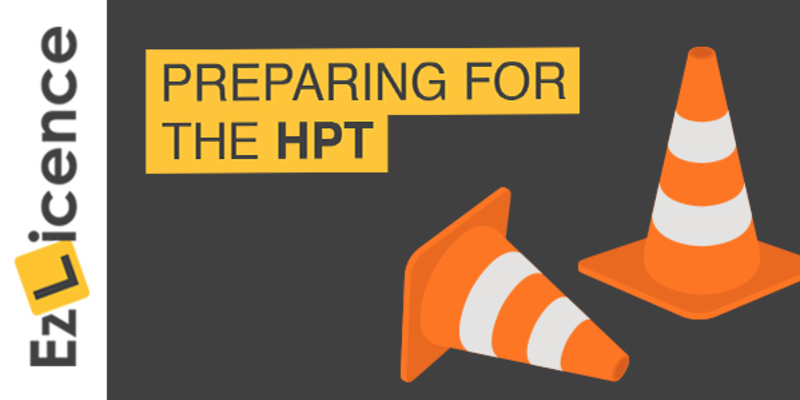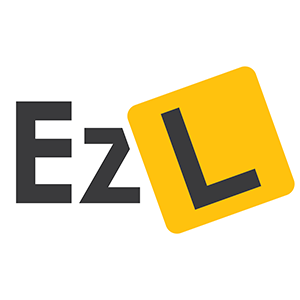How to Prepare for the Hazard Perception Test
Last updated 24 Oct 2025

Key Takeaways
- The Hazard Perception Test (HPT) can be challenging for some individuals, as it requires specific preparation and skills to successfully identify and respond to potential hazards on the road. The difficulty of the test is often due to the need for heightened situational awareness and the ability to prioritize hazards effectively. While the test itself is a computer-based simulation that doesn't require technical skills, the key to passing is adequate preparation, practice, and remaining calm during the test. Here's a breakdown of the factors that contribute to the perceived difficulty of the HPT:
- The HPT is a computer-based test that involves identifying and responding to hazards in simulated driving scenarios.
- The number of video scenarios varies by state, with some having 25 to 28 scenarios.
- Preparation is crucial; inadequate preparation often leads to failure.
- Practice tests are available online for familiarization with the test format.
- Practical experience through driving lessons helps in identifying and reacting to hazards.
- Practicing in diverse driving conditions, such as wet weather, enhances hazard perception skills.
- Staying calm and relaxed is essential, as nervousness can lead to premature reactions.
- The test duration ranges from 15 to 45 minutes, depending on the number of questions.
- Booking the test requires contacting the state’s HPT provider or visiting their website.
You’ve been on your learner’s permit for the required amount of time, and you’ve completed your logbook hours. Congratulations on reaching this milestone! It’s now time to tackle the Hazard Perception Test.
You’ll be awarded your P1 (probationary) licence when you pass your Hazard Perception Test.
You’ll be one step closer to securing your full licence.
We know taking the Hazard Perception Test can be a bit daunting. That’s why we’ve put together this guide on how to prepare for the Hazard Perception Test.
Remember, passing the Hazard Perception Test (HPT) isn’t just about taking that next step towards getting your full licence. Learning how to correctly identify hazards and respond to them is vital to ensure you stay safe on the road.
Let’s unpack everything you need to know about the HTP.
What is the Hazard Perception Test?
The HPT is a computer-based test that uses a touch screen to measure how well a learner driver identifies, and then appropriately responds to, dangerous situations on the road. You don’t need to have any technical computer abilities to undertake the HPT.
During the test, you will be required to watch and respond to a number of videos depicting different driving scenarios. You’ll need to identify any hazards and then indicate when and how you believe the driver of the vehicle should respond to the hazard.
Dashboard information (such as speed of travel and indicator usage) will be shown on the screen, and you’ll also be informed of the intentions of the driver in each video. The test is simulated, and will not require you to actively control a vehicle at any time during the test.
You cannot be assisted during the test.
The HPT can be taken by learner drivers, people who need to convert to a probationary licence, and people who need to convert to a full licence. You can’t take your driving test without first passing the HPT.
You can take the test online or in person.
How Many Questions Are in the Hazard Perception Test?
The number of questions on the HPT test varies from state to state.
For example, the Victorian HPT requires you to respond to 28 video scenarios, while the New South Wales HPT contains 25 video scenarios. The quantity of questions on the Hazard Perception test fluctuates, and the key thing to remember is to go in as prepped as possible. Don’t fixate too much on the number of questions, rather the content of the questions.
Check-in with your local HPT provider for state-specific information.
How Long Does the Hazard Perception Test Take?
The HPT takes approximately 15 to 45 minutes, depending on how many questions the test contains.
How to Prepare for the Hazard Perception Test
You might be tempted to ‘wing’ your HPT test (it can’t be that hard, right?). However, in almost all cases, inadequate preparation results in a test failure.
You will need to prepare properly to be able to correctly identify and respond to hazardous scenarios. Preparing ahead of time will set you up for success and give you the best chance at passing the first time around.
If you do fail the test, you won’t be told how well you did in specific areas. Instead, you’ll be given advice on what areas you need to improve upon for your next try.
Let’s take a look at how to prepare for the Hazard Perception Test so that you can feel confident going into your test.
What to Bring to a Hazard Perception Test
If you’re taking the HPT in person, remember to bring:
- Your learner permit
- Original evidence of identity if your learner permit is lost or misplaced
- A water bottle
Take Driving Lessons with a Driving Instructor
Taking driving lessons with a qualified instructor will help you learn how to safely identify and respond to potential hazards on the road.
It has been shown that professional driving instructors have a longer-lasting impact on learner drivers than supervising parents or friends.
Driving instructors provide student-focused, educational driving instruction, which leads to the more successful development of higher-order skills (such as hazard perception and situational awareness). On the other hand, supervised driving sessions with parents or friends tend to centre around the handling of the car or road rules.
Additionally, many driving instructors now teach in dual-control cars and are able to provide learner drivers with a safer and more controlled driving environment.
Practice Driving in Different Scenarios
If you’re ready to take your HPT, then you’ve completed the necessary hours on your learner’s permit.
Make sure you’ve practised driving in a range of different scenarios. This experience will help you learn how to identify developing hazards and respond to them in real time.
If you’ve reached the end of your hours but feel some gaps in your knowledge, head out for a few more practice drives in different conditions. For example, if you haven’t had much experience driving in wet weather, schedule a lesson for a rainy day.
Wet weather is a commonly-encountered hazard. You may be aware of the immediate hazard of reduced traction on the road, but you should also be aware of potential flooding or large puddles. It’s hard to control a car on a wet surface, but it’s impossible to control a car that’s hydroplaning.
Practise Prioritising Hazards
In preparation for your HPT, be sure to practise prioritising hazards with your instructor or supervisor.
It’s a natural instinct to react immediately when we see something we perceive as a threat or otherwise dangerous. However, this can sometimes cause more harm than good.
In some cases, doing nothing at all is in fact the best reaction. When reacting to one hazard could create a new, greater hazard, it’s best not to react.
It will take practice, but as you get more experienced driving on the road with the guidance of a good driving instructor or parent, you will learn how to identify what is an immediate hazard and what is a potential hazard, and how to prioritise them.
Practice Hazard Perception Tests Online
One of the most important things you can do to prepare for your HPT is to take the practice tests online.
Each state will have its own practice HPT resources online. You can take these practice tests as many times as you like.
As the old adage says, practice makes perfect! So, make the most of these resources and run through practice questions in the lead-up to the real test.
Stay Relaxed
While the lead-up to your HPT can be a nerve-wracking time, do your best to stay calm and relaxed.
During the test, you’ll need to be alert, but calm and measured in your approach. If you’re overly nervous, you may jump the gun and react too quickly to hazards, which can result in a failed test.
Practising being calm during your HPT is important, as you’ll need to utilise this skill when you’re actually behind the wheel. Panicking or reacting preemptively while driving can be very dangerous, so learning how to remain calm is vital.
To stay relaxed before your test, make sure you study thoroughly well in advance. On your test day, eat a healthy breakfast, perhaps head out for some light exercise, and practise some deep breathing.
Don’t Have Anything in Your System
Do not drink alcohol or consume drugs before sitting the HPT. While you’re not actually in control of a vehicle during this test, it’s still very important to be alert and aware.
How to Book Your Hazard Perception Test
To book your HPT, you’ll need to call your state’s HPT provider or visit their website to make an online appointment.
Preparing for Your Hazard Perception Test
Sitting the HPT is an exciting milestone on your road to becoming a fully-licenced driver.
To prepare for the test, ensure you have enough driving hours and professional lessons under your belt, and run through a few hypothetical scenarios to practise identifying, responding to, and prioritising hazards.
On your test day, relax as much as possible and get plenty of rest to ensure you’re alert, refreshed, and ready to go.
If you feel you don’t have the necessary driving experience or you’re not confident behind the wheel, meeting with a driving instructor is a great way to practice navigating hazards with peace of mind and get valuable feedback.
Book lessons online today in under 60 seconds with EzLicence and get yourself on the right track to driving safely and successfully.

About the author
The EzLicence online platform brings transparency, choice and efficiency to booking and managing driving instructors and driving lessons in Sydney, Melbourne, Brisbane, Perth, Gold Coast and Sunshine Coast.